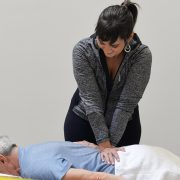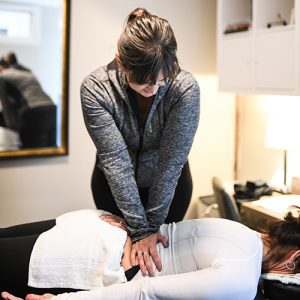Setting Goals for the New Year: Part One – What to address FIRST?
New Year’s may still seem pretty far away, but if you plan on setting any resolutions or goals for 2019, you should start now. The earlier you set your goals, the more likely you are to achieve them. But choosing meaningful and positive goals is a process. That’s why we’re launching this four-part blog series to be your guide as we head into the end of 2018!
The first step is identifying what you want to change – FIRST.
A typical New Year’s resolution might be to lose weight or be more active. But before you can address those goals, it’s important to take a quick inventory of your body and identify obstacles that might get in the way. The last thing you want is to get all excited about a goal, only to have those aspirations quickly deflated because you neglected to see the whole picture.
Let’s take the weight loss goal for example. Coming from a physical therapist’s point of view, that might mean asking yourself, “what hurts?” or “what has physically been bothering me?” What are one or two things that could possibly get in your way of completing this goal? Maybe your body is feeling great, you could still be struggling on other levels. It’s important to be honest with yourself and identify anything and everything that could be an obstacle to your goal. Once you can recognize and become aware of this issue, you have the opportunity to resolve it!
But how do you do that? First, you have to get specific. For example, if you want to address your back pain in the New Year, so that you can be more active and lose weight in 2019, it’s not enough to simply say “I have a problem with back pain.” When we get specific, we are able to take what may seem like a big, overwhelming problem – and turn it into bit size actionable chunks….
Start with focusing on the what, when, where, and why of the problem.
“Back pain” in itself is a general term. It’s more likely that instead of your entire back hurting at the same level all the time, you have a specific area (or areas) that hurts during specific activities. For instance, your “what” (the specific problem at hand) could be low back pain. The “when” could be in the evening after a long day on your feet. “Where” could be your living room when you’re trying to get up off the couch, or the golf course after a swing. “Why” could be a combination of factors that are causing you to experience the pain. For example, your body mechanics might be off to the point where it’s causing degradation of your vertebrae. Learning to move properly (for instance, with a physical therapist) would be a logical way to address that “why.”
Next, write down your focused description of the problem.
The simple act of writing something down will clarify and solidify your intentions. In this example, we started with the general statement “I have a problem with back pain.” We broke that down into parts, so that now you might say:
“I am experiencing severe low back pain. It typically occurs in the evenings after I’ve spent a long day on my feet, particularly when I’m moving from sitting to standing. This is likely a result of poor body mechanics, as I have never been instructed in proper movement to relieve back pain. This is the issue I intend to resolve so that I can be more active in 2019 and lose 20 lbs.”
Our next blog post will consider this series and discuss how to set a specific long term goal.
Stay tuned for this post coming out on 11/20! In the meantime, you may want to consider how physical therapy could help you in improving your overall health this upcoming New Year. You may not have a specific physical complaint like the one we described in this post, but working with a physical therapist can actually help you PREVENT these issues from arising later on! As we continue to age, it becomes more likely that we will experience back pain and numerous other issues. The great thing about PT is that it strengthens your body in all the right ways to guard against joint degeneration, stiffness, achiness, muscular weakness, and loss of balance (just to name a few benefits).
If you want to know if one of our specialists can help you, apply for one of our FREE Discovery Visits right here in Portsmouth!





